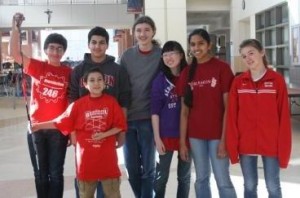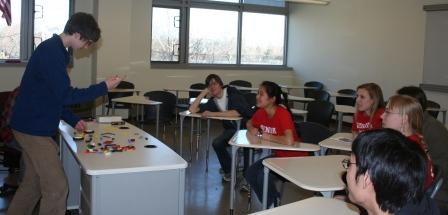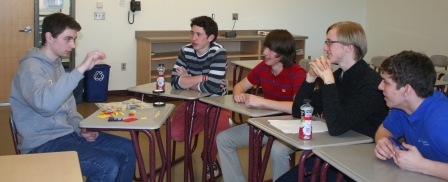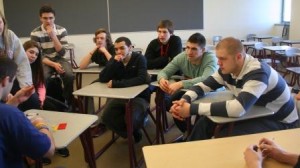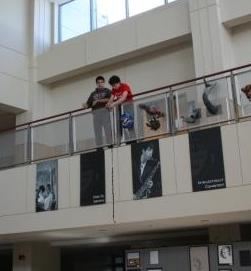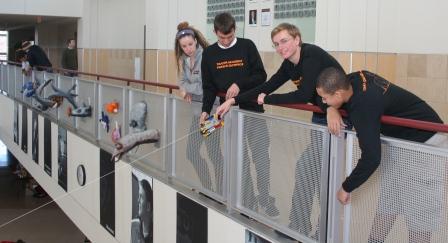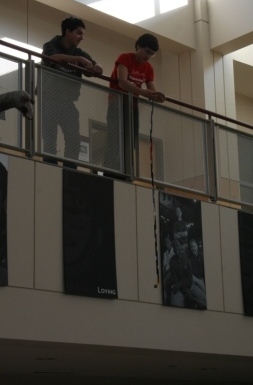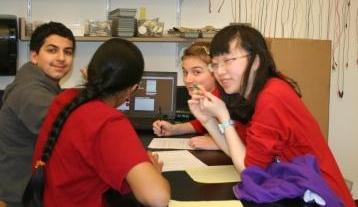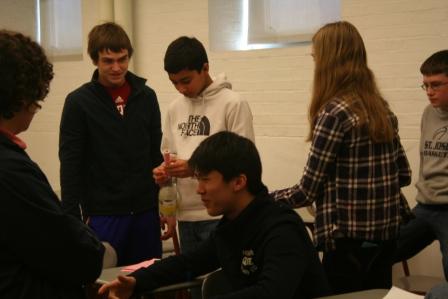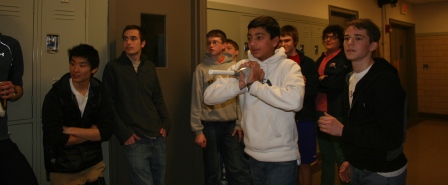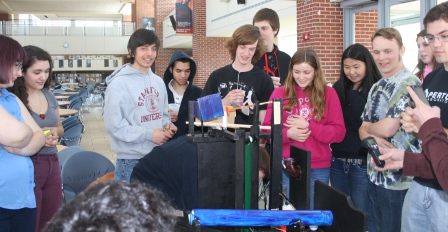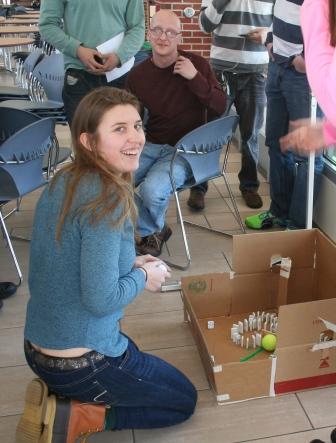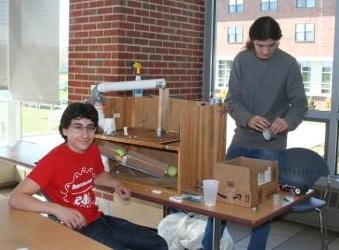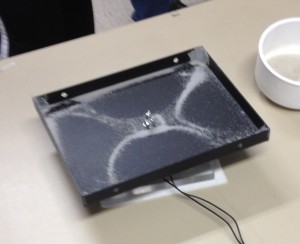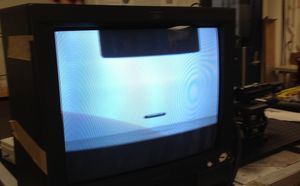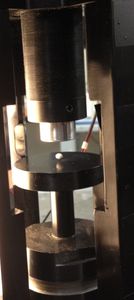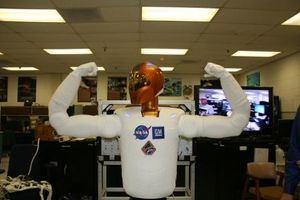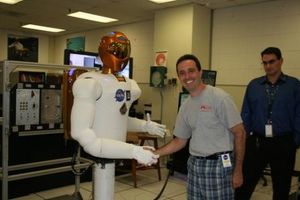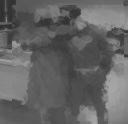This week the students in physics went to tour the Auditory Neurosicence Lab. We have been studying acoustics and waves for the past two weeks. In Professor Shinn-Cunningham‘s lab they study how the brain perceives sounds received by the ear. Sid and Scott gave us a great tour of the lab.
One of the issues they study in this lab is how we as humans can tell what direction a sound comes from. Our TWO ears hear sounds slightly differently. Not only may there be slight differences in volume, but more importantly, there are microsecond differences in the timing of when a sound hits one ear before the other. An extreme example of this of course are barn owls who can really tell direction with their ears as the sound enters their ears differently because of the way they are built! And if you were to shield your ears, things would sound a bit different.
As sound waves enter the ear they vibrate the drum and the bones which in turn vibrate the fluid in the inner ear. The fluid affects the hairs which line the cochlea which is a cornucopia shaped organ. Because of the physics of the cochlea, there is dispersion, and different frequencies (or pitches) will stimulate different nerves. Thus one can think of the cochlea as an organic spectrum analyzer, taking the Fourier Transform of the incoming sound waves.
When we arrived, one of the Inyoung was in the Sound Booth and his head was covered with EEG sensors. You can also see his brain waves here. The net on his head measured scalp potentials (voltages) with 32 sensors. They measure the response of the cortex and the brain stem. Interesting fact: If you were to flatten out the cortex it would be the size of a large pizza.
We could see on the EEG the periodic blinking of the eyes and clenching of teeth. This is because muscular signals are stronger than thinking brain waves. We were also shown that when you close your eyes that we can see the 10 Hz Alpha Wave, which was the first brain wave ever detected.
The other interesting area of research in this lab is the Cocktail Party Problem. In a crowded noisy room, how are you able to discern one voice from the others. A cell phone or a computer (nor a hearing aid) cannot do this, but we as humans can. They have been doing a lot of work with veterans coming back from Iraq and Afghanistan who have suffered from brain trauma due to head injury and noise exposure. Often they have trouble differentiating single voices in a noisy room.





